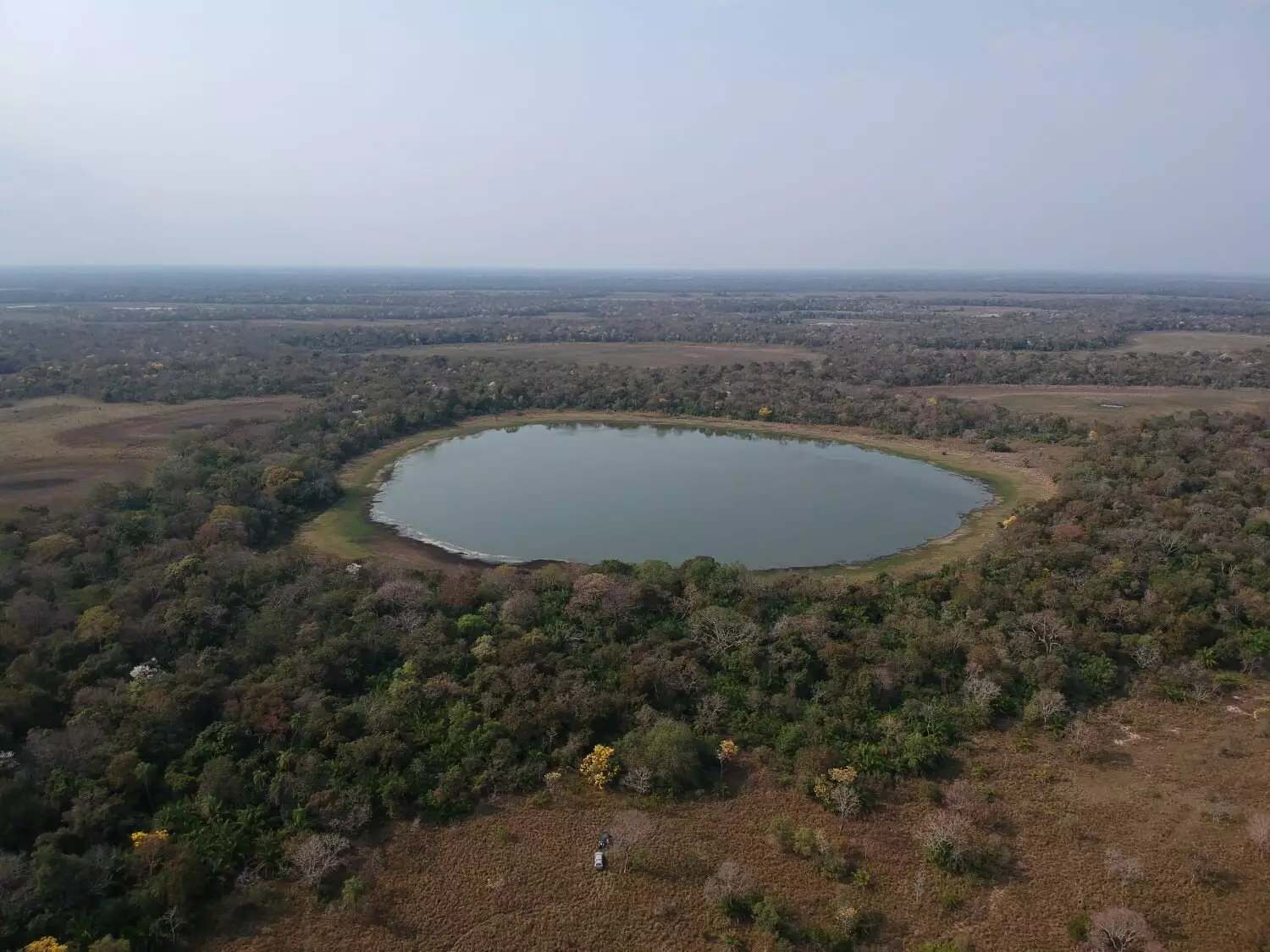The Pantanal, located primarily in southwestern Brazil, is acknowledged as the world’s largest tropical wetland, spanning an impressive 153,000 square kilometers. It is not only a vital ecological sanctuary but also a significant player in the global climate system. Comprising a diverse range of habitats, from marshes to floodplains, this unique biome harbors a remarkable array of flora and fauna. However, one of the lesser-known ecological aspects of the Pantanal is its soda lakes—shallow, alkaline bodies of water that serve distinct ecological functions and are increasingly focal points of greenhouse gas research.
Unlike conventional freshwater lakes, soda lakes exhibit unique properties such as unusually high pH levels, sometimes reaching as high as 11, and a high concentration of carbonates and bicarbonates. These characteristics significantly influence the microbial communities that thrive within these waters. Such environments are critical not only for understanding local biodiversity but also for averting potential climate change impacts as the world becomes increasingly aware of how emissions vary across different lake types.
A recent study conducted by Brazilian scientists from the University of São Paulo (USP) and the Federal University of São Carlos (UFSCar) highlights the often-overlooked relationship between microbial communities and greenhouse gas emissions in these soda lakes. This research offers a fresh perspective on the interplay between biological factors, land management, and climate. The team’s findings underscore the necessity for further investigation into how these ecosystems respond to environmental changes such as extreme weather, droughts, and wildfires.
Soda lakes in the Pantanal can be classified into three distinct categories based on their water chemistry and microbial makeup: eutrophic turbid (ET), oligotrophic turbid (OT), and clear vegetated oligotrophic (CVO). It was observed that ET lakes were prolific methane producers, likely due to the decomposition of cyanobacterial blooms and organic matter. During drought periods, the breakdown of organic material accelerates, leading to increased methane emissions. Conversely, OT lakes exhibited lower emissions, possibly attributable to their high sulfate content, though they still released carbon dioxide (CO2) and nitrous oxide (N2O).
One pressing concern linked to soda lakes in the Pantanal is the impact of climate change. Increasingly erratic weather patterns have made the region susceptible to extreme droughts, which exacerbate the conditions in these lakes. As the researchers noted, since 2017, their initial sampling sites have largely dried up, revealing detrimental trends associated with rising temperatures and altered rainfall. The alarming proliferation of cyanobacteria in the area indicates that these ecosystems are already undergoing transformative changes that could lead to significant greenhouse gas emissions.
In recent years, the Pantanal has suffered from record-breaking wildfire incidents. For instance, in 2020 alone, there were over 22,000 reported wildfires—more than any year on record. By 2024, this trend had not abated, with thousands of fires impacting the ecosystem further. As satellite images depict a grim narrative of shrinking water bodies and increased cyanobacterial growth, the need for urgent ecological intervention becomes evident.
Microorganisms: The Unsung Heroes of Ecological Processes
Microorganisms, particularly in these aquatic ecosystems, play a crucial role in nutrient cycling and overall ecological health. Understanding their function offers insights into how soda lakes contribute to broader biogeochemical cycles. Research highlights that these microorganisms provide the foundational processes necessary for the ecology of soda lakes. This insight was reinforced by microbiologist Simone Raposo Cotta, who emphasized the importance of these tiny organisms in maintaining ecological balance.
Moreover, the implications of this research stretch beyond just understanding emission dynamics. The researchers are also focused on the biogeochemical functioning of these lakes. Analysis of how these lakes form and operate can inform future conservation strategies. There is a vital need for models that can more accurately determine the contributions of these soda lakes to the Pantanal’s greenhouse gas emissions, as this knowledge is essential for formulating effective management and mitigation strategies.
This recent investigation into soda lakes in the Pantanal paves the way for more comprehensive research on greenhouse gas emissions and climate change impacts. The findings not only highlight the drastic changes occurring in these ecosystems but also call attention to the urgent need for further studies to understand the complex relationships among their microbial communities, water chemistry, and climate dynamics.
As researchers continue to explore these questions, it becomes clear that the survival of the Pantanal’s unique soda lakes—and their essential ecological functions—hinges on our ability to adapt our management strategies in the face of ongoing climatic shifts. By integrating ecological research with effective conservation measures, there lies the opportunity for enhancing our understanding of these essential ecosystems and ultimately fostering resilience against the perils of climate change. The work undertaken by scientists in this field is vital as it shines a light on one of the world’s more exceptional yet vulnerable biomes that plays a critical role in our planet’s ecological balance.


Leave a Reply